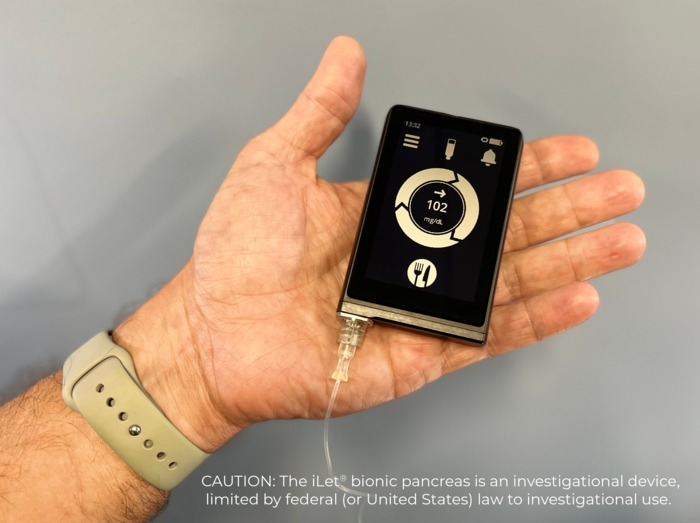Published on
Updated
Reading 3 mins.
A new trial conducted on more than 200 people confirms the benefits of a bionic pancreas, which would automatically deliver the right dose of insulin in the body, without supervision. A system that would simply change the lives of people with type 1 diabetes.
Type 1 diabetes is a serious disease that affects 10% of diabetics in France and involves the pancreas: a person’s sugar level rises when it does not produce enough insulin, the hormone that controls blood sugar. In fact, people with type 1 diabetes must constantly monitor their blood sugar to know the right dose of insulin to inject. A heavy constraint on a daily basis. But the invention of a “bionic” pancreas, a credit card-sized device called an “iLet,” which would monitor a person’s levels around the clock and automatically deliver insulin when needed. needed via a tiny cannula could change the lives of his patients. This new type of pancreas is at the center of joint studies carried out in the United States. This is the most extensive trial undertaken to date, since 2010.
A significant drop in sugar levels
To test their hypothesis, the Harvard team, in collaboration with other universities, provided 219 people with type 1 diabetes who had used insulin for at least a year with a bionic pancreatic device for 13 weeks. . The team compared their blood sugar levels to those of 107 people with diabetes who were using other methods of insulin delivery, including injection and insulin pumps, during the same period.
Eventually, the results showed a more significant improvement on the people equipped with the bionic device than on the others: the blood sugar levels of the bionic pancreas group fell from 7.9% to 7.3%, while that standard care group levels remained stable at 7.7%.
Rates still high (the American Diabetes Association recommends a goal of less than 7.0%), but according to a 2019 study, only 20% of people with type 1 diabetes are likely to reach this threshold.
Avoid counting carbohydrates, to relieve diabetics
The interest of this bionic pancreas lies above all in the fact of relieving the diabetic person from entering his daily information, before administering insulin, including the quantity of carbohydrates he consumed during his last meal.
The iLet bionic pancreas takes the user’s weight and the type of meal they eat, such as breakfast, lunch or dinner, added by the user via the provided interface, and it uses an algorithm to adaptive learning to deliver insulin automatically. This means that if the person’s glucose levels are too high, the system will adjust to deliver a higher dose of insulin, and if the levels are too low, it will deliver less.

The stated goal of the project is to democratize good blood sugar control, says Steven Russell, associate professor of medicine at Harvard Medical School, who led the study. “There are a lot of people struggling right now because they don’t have the right tools, and I think iLet could help a lot of them get better blood sugar control”, he said. “This will reduce their risk of long-term diabetes complications and also make their lives easier.” he concludes.
A system soon to be available in France?
Consulted on the subject, Dr Guillaume Charpentier, diabetologist, president of CERITD (Center for Study and Research for the Intensification of Diabetes Treatment) and creator of Diabeloop, the French artificial pancreas, is delighted with this progress, even if he finds the term “bionic pancreas” a bit excessive: “We are 4 candidates in the world currently working on automated insulin pump systems, and this study is fairly consistent with our standards, without being overwhelming.”
However, he reacted to the imminent benefit of such a system, whether it originated in the United States or France: “We are all pretty much at the same point. What we are all trying to achieve is to achieve the best calculation: insulin acts 2 hours after injection. What is complicated is to inject the right dose, not in relation to the actual blood sugar level, but to predict the needs 2 hours later. How to extrapolate from the past, the needs in the hours to come, without calculation on the part of the patient? What we are developing is a real learning system,” he explains.
As for the question of whether this system will soon be accessible to type 1 diabetic patients in France, the doctor is categorical: “We are in the starting blocks, and we have all started distributing artificial pancreas, in France too. Only details remain to be worked out, such as social security coverage, or telemonitoring, how to set up a system in which the doctor can have access to the data. But within 5 years, there is no doubt that almost all patients will be equipped with this kind of system” he warns.
